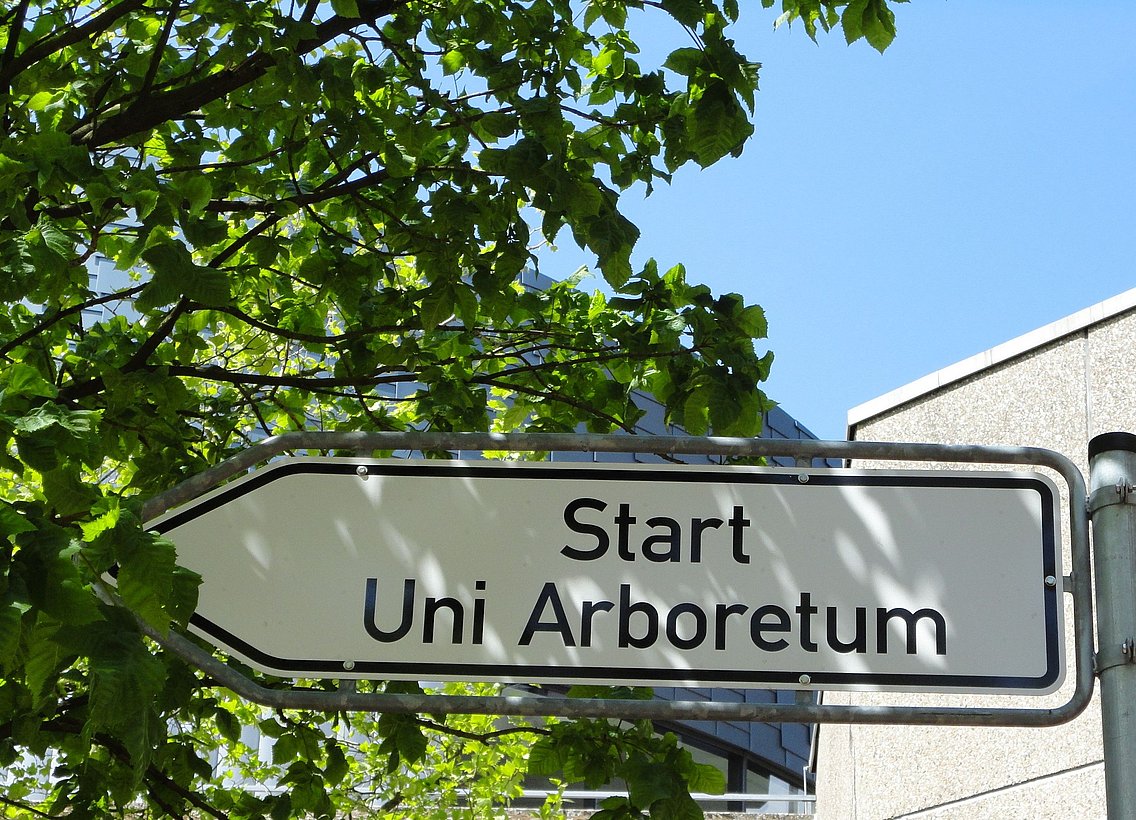University arboretum breaks new ground

Trees and forests are of immense importance in terms of protection against global warming. They utilise carbon dioxide to grow, thereby reducing its content in the air. In urban areas, trees play a vital role thanks to their cooling capacity. Cities become increasingly hot and dry in summer. Trees help to cool the environment by evaporating water or providing shade. Despite their importance, urban trees do not have an easy life; factors such as heat, lack of water, compacted and sealed surfaces, and pollutants make life difficult for them.
The university arboretum is also changing. In autumn 2022, unfortunately, the trees between Building K and the kindergarten on the Grifflenberg campus had to be felled to make way for a new physics building. In the meantime, numerous new trees have been planted and a new path designed so that 102 species of tree can be labelled again. Some of these species are potential "future tree species", and mostly younger trees were planted as they have more time to adapt to the conditions. The 'new' path through the university arboretum featuring the 102 tree species is described in the new brochure, which can be printed as a DIN A5 publication. The arboretum is open to all students, university staff and interested visitors. The arboretum's starting point on the Grifflenberg campus is located at the stairs next to the main entrance near Building G.
We hope you enjoy your walk through the arboretum.
Gertrud Lohaus

